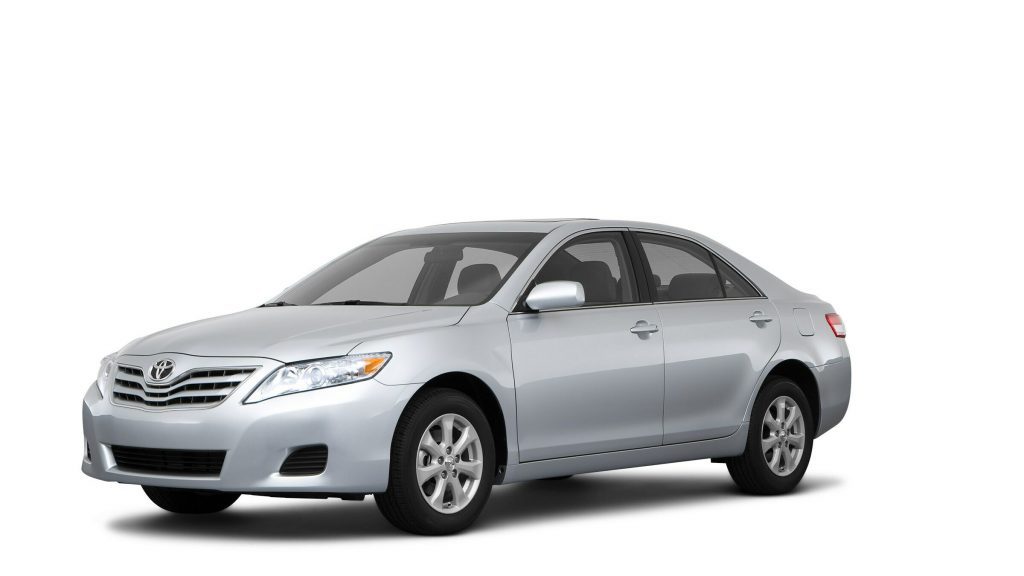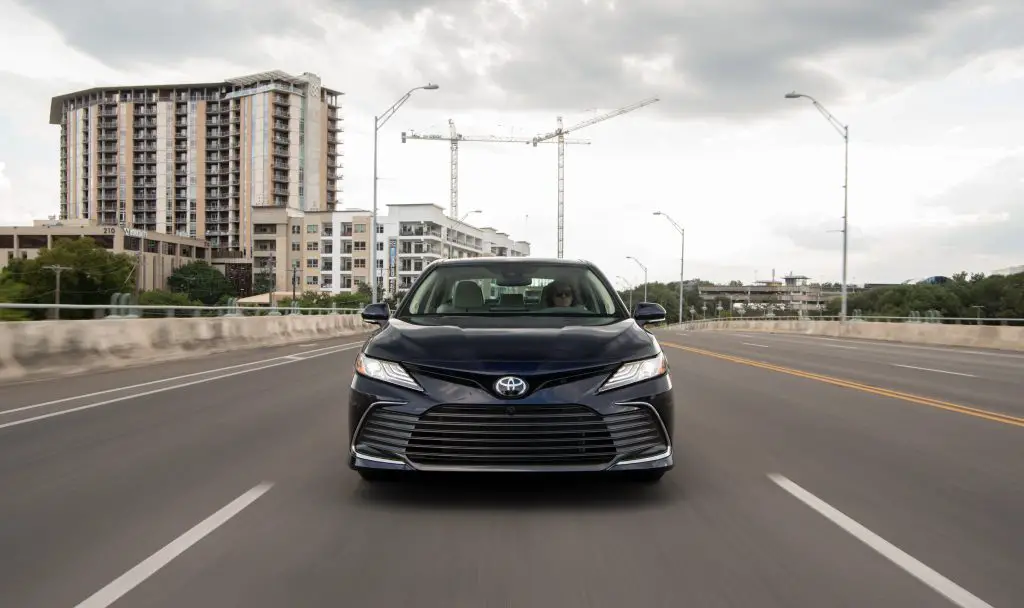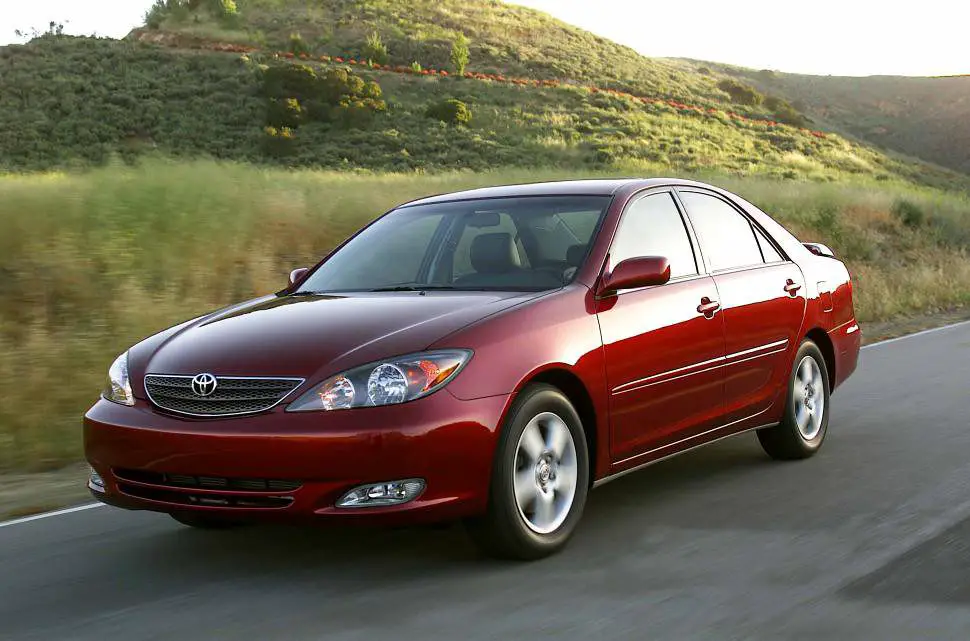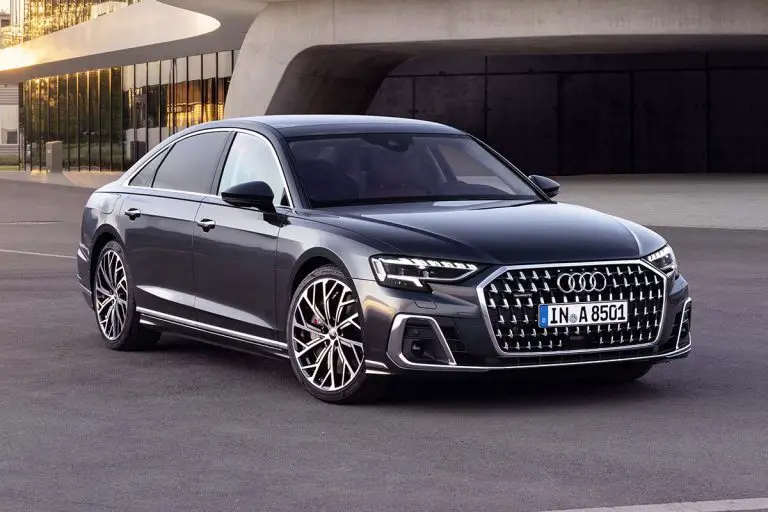Toyota Camry Best and Worst Years (Top Picks!)
The Toyota Camry is a fantastic family vehicle made available to the general public in 1983 and immediately rose to popularity.
It is a dependable car for all your family’s needs thanks to its excellent resale value and long-lasting durability.
It has seen numerous model changes throughout eight generations since its introduction, most of which have been safe and secure but lacking in the thrill and excitement of driving.
Although subsequent versions have improved this and made the automobile more fun, every model is fault-free.
Let’s examine the Toyota Camry best and worst years!

VIDEO: Best and Worst Used Toyota To Buy And Toyota Buying Advice
Toyota Camry Best and Worst Years
The most significant and worst years for a used Toyota Camry, according to VehicleHistory.com and MoneyInc.com, are as follows:
The best years are: 2004; 2006; 2010; 2011; 2012; 2013; 2019; and 2020.
The worst years were: 2007; 2009; 2008; 2002; 2003; 2005; 2014; and 2015
It is significant to note that, according to VehicleHistory.com, some years have demonstrated to be just the reverse, with several recalls. Toyota Camry owners can support the safety and dependability of their cars by keeping up with routine maintenance and essential repairs. Furthermore, the Toyota Yaris is ranked first out of 21 other subcompact cars by RepairPal and has a reliability rating of 4.5 out of 5.0. However, the 2007 Toyota Yaris has had the most complaints, as seen by its 399 NHTSA complaints and ten recalls for clear-coat concerns that are peeling.
What Years To Buy? List Of The Top Years For The Toyota Camry

Get a list of the Toyota Camry’s most dependable years so you can steer clear of the problematic ones.
The models listed here are the best that Toyota offers in this lineup, and a Toyota Camry can easily withstand the test of time.
Toyota Camry year 2004
The 2004 Toyota Camry achieves its goals and then some. Toyota introduces the best model in the entire portfolio two years into the fifth generation. This SUV has every feature you could want and is at its best.
This model is well-deservedly recognized for its smooth ride and premium interior, which features a user-friendly navigation system and a hushed interior.
This model is dependable and robust with the correct trim, and it can last the test of time while maintaining a high value when you decide to sell it. It is a wise investment that will last you for many years.
This specific model offers something for everyone and is available in 6 distinct trim levels.
Toyota Camry 2006
Cummins Group Unveils Transportation Technology Plan for the 2023 Auto Expo
The 2006 Toyota Camry was released to the public two years after the 2004 model’s success and after the 2005 model’s disappointment, reestablishing the brand’s history of producing high-quality cars.
With this model offered in an incredible seven distinct trim levels, the peaceful interior was once again present.
With a 4-cylinder V6 engine, an automatic or manual transmission, an add-on navigation system, and a staggering 210 horsepower in the SE model, Toyota was set up for success in the SUV market.
There were seven various trim levels available for this car, with the most expensive and opulent being the XLE V6.
Toyota Camry 2010
The Toyota Camry’s sixth generation was about to enter its final years when Toyota unveiled the model 2010, which had improved USB audio connectivity and minor, aesthetic modifications.
The vehicle came in 4 trim levels and offered a V6 engine and a 4-cylinder engine that had been updated. The stability system was now a standard feature, and the interior and suspension of the SE model were significantly more opulent and potent.
The Toyota Camry continued to be one of the best-selling vehicles thanks to the 2010 model, but it did lose some ground to its rivals. Compared to the previous two years, the 2010 Camry has a much smaller selection of trims.
Toyota Camry 2011
As I previously stated, the Toyota Camry was losing ground on its rivals, and while it couldn’t stop the leaderboards, the 2011 Camry finished in a close second. There were four different trim levels for the five-seat car.
It had a base model that was reasonably priced, quiet, and comfortable inside, as well as a plethora of safety measures that complemented the car’s excellent crash test scores.
The 2010 appearance was carried over with this model, while the updated 4-cylinder and V6 engines gave the vehicle exceptional performance. However, like the 2011 Toyota Camry, this model only comes in four well-liked trim levels.
Toyota Camry 2012
A redesign of the 2012 Toyota Camry, which launched a new generation of the lineup and helped it outsell all of its rivals, helped it gain more customers.
The five-seater received a fresh exterior and enhancements and was offered in 5 different trim levels.
The opulent interior and beautiful dashboard make driving a pleasant experience, while better brakes and fuel efficiency result in a smoother driving experience. All of this resulted in a dependable car for the family.
The 2012 Camry had a fifth, limited edition trim in addition to the usual four trims as the previous two years.
Toyota Camry 2013
Following the popularity of the 2012 model, Toyota decided to capitalize on it and introduced the 2013 Camry, which had the same design as the previous one but lacked some of the amenities and advantages that had made the 2012 model so popular.
Despite this, it was still a reliable car for buyers because it was a top safety option with top-notch safety features. In addition, the interior garnered favorable reviews, and the performance, particularly on the sports trims, was fantastic.
Similar trims, notably the particular edition variant that garnered positive reviews, were also available on this model.
Toyota Camry 2019
Over time, older models can feel stale and boring.
Fortunately, the 2019 Toyota Camry is a modern, fourth-generation model that keeps the redesign from the 2018 model while significantly improving to produce a premium car that competes with and sometimes outperforms its rivals.
Five distinct trims are available for this vehicle, most of which fall into the same price range; however, the XE series trims are slightly more expensive.
Toyota increased its focus on turbo-free engines and significantly improved the ones already used, resulting in smooth and vivacious revving. In addition, the dashboard is highly sophisticated and equipped with the newest technology for an easy-to-use experience.
Toyota Camry 2020
With the 2020 Camry, Toyota went all out. Ten trim levels were available, allowing customers to choose the best model.
A staggering ten trims are available for this model, which is enough to please the general public. A 3.5L V6 was also offered, efficiently producing 301 horsepower, but the standard model came with a 2.5L 4-cylinder, which could produce 203 horsepower.
The automobile offered good driving and handling characteristics, standard safety equipment, hybrid efficiency, and a cozy interior for the family.
Years To Avoid On The List Of The Worst Years For The Toyota Camry

When a Toyota Camry is in poor condition, its flaws can range from barely bothersome to completely useless.
Let’s examine the worst Camrys that are now on the market more closely.
Toyota Camry 2007
The 2007 Toyota Camry is a vehicle that has received several complaints and is universally despised; I would never even contemplate buying one. However, due to the numerous issues it had, the 6th generation’s premiere model received a great deal of criticism.
The model was the first in a long line of problems with high oil use that would affect subsequent versions. In addition, customers are compelled to purchase a replacement engine due to the irreparable harm that oil deprivation from defective piston rings causes to the engine.
Unintentional acceleration was frequent, and in some instances, drivers have reported their engines simply blowing up. Therefore, I strongly advise against buying this particular automobile type because the engine alone will save you a lot of money.
The interior and dashboard could be better quality, so let’s not even bring them up.
Toyota Camry 2009
The 2009 Toyota Camry was far worse than the 2008 model, and while the 2008 model would not do any better, it appeared that the 2009 model was attempting to compete with the 2017 model in many ways. Unfortunately, two years later, the issue of excessive oil usage persisted.
Even worse, Toyota attempted to pass it off as entirely usual. Along with difficult idling, engine failure was another regular occurrence. The dashboard was melting and breaking apart. Thus, the inside needed to be in better shape. The tires were of poor quality as well.
If 2007 hadn’t been much worse, this model would have been higher overall.
Toyota Camry 2008
Even though the 2008 Toyota Camry made an effort to atone for the horrors the 2007 Camry created, it was still far from a high-quality car.
The engine was once again prone to using too much oil. Around 1200 miles, the oil would entirely disappear, which Toyota again emphasized was utterly ordinary.
Unfortunately, the consumers were already displeased with the dashboard melting and shattered sun visor, so this did not sit well with them. That Toyota would not solve these issues with at least a few models was evident.
Toyota Camry 2002
The 2002 Camry was a rough start for the 5th generation cars, albeit better than the 6th generation models. It tended to overheat and used too much oil, but not as much as the 6th-generation models.
Additionally, the head bolts have the propensity to strip. As a result, it was common for the transmission to fail, making gear changes that were already difficult and intolerably inconvenient.
The model also exhibited an excessively long braking distance and premature brake failure.
The Camry would have a limited number of models in the following years, making consumers more conscious of this. This is accurate considering the following model.
Toyota Camry 2003
The 2003 Toyota Camry attempted to be a better version of the 2002 Toyota Camry; however, although fixing some of its issues, it still struggled with other issues, leading to the production of another subpar Camry in 2003.
The head bolts were still prone to stripping, and the engine had a history of failing. In addition, when turning, the steering wheel made a knocking noise, which was generally noisy.
Gearbox troubles like complex gear shifts, gearbox failure, and reluctance when accelerating continued to be a problem, which irritated many consumers who had grown weary of Toyotas’ ongoing mistakes.
Toyota Camry 2005
Toyota appeared to have established a strong position with the 2004 model, but it quickly lost it with the introduction of the 2005 Camry, which brought the number of issues to a new high.
Toyota allowed a critical issue to persist: the engine’s abrupt and unplanned acceleration. Additionally, the throttle body was flawed, and the brakes might have been, too, given that they failed to stop the car and would fail while it was moving.
Furthermore, the steering rack would leak, making turning noisy, and the steering was in poor condition. Many passengers and clients would find this irritating, and Toyota would hear their concerns.
Toyota Camry 2014
As a member of the 7th generation of the lineup, one would think Toyota would have everything under control, but sadly, they delivered yet another model with several issues.
While none of them were as noticeable or dangerous as earlier models, it is unfortunate that your air conditioner has a musty smell.
The engine continued to shake and rattle, particularly during startup, and there were reports of excessive oil usage. Along with paint flaking and loose fenders, torque converter failure was another issue with this model.
Toyota Camry 2015
Following the 2014 Toyota Camry’s lead, the 2015 model likewise experienced a few nagging issues that would have significantly improved the vehicle if it hadn’t existed.
Most of these complaints stemmed from the interior, which had uncomfortable seats, a flawed dashboard system with poor device compatibility, and an unreliable clock.
Additionally, the steering would vibrate excessively and tug in a particular direction. Additionally, the transmission was having shift problems and was generally problematic. Generally speaking, the automobile was plain unpleasant to be in.
For this reason, it is included on this list, even though it had few of the significant issues that older models did.
How Safe Is Toyota Camry?

According to VehicleHistory.com, the Toyota Camry is typically considered a safe automobile, but some years have been quite the reverse, with numerous recalls. As a result, the following years are the ideal and least ideal for a used Toyota Camry:
The best years are: 2004; 2006; 2010; 2011; 2012; 2013; 2019; and 2020.
The worst years were: 2007; 2009; 2008; 2002; 2003; 2005; 2014; and 2015
Note that some years have had issues with the dashboard and airbags, while others have had problems with oil consumption, braking fluid leakage, and airbags that don’t deploy.
However, according to IIHS.org, the 2020 Toyota Yaris also achieved favorable scores for front crash prevention, crashworthiness, and crash avoidance and mitigation.
Toyota Camry and Yaris owners may help ensure the safety and dependability of their cars by keeping up with routine maintenance and essential repairs.
How To Find The Best Deals on Toyota Camry?
It is advised to start by checking Toyota.com for the most recent offers and discounts on new Toyota automobiles to locate the most incredible deals on a Toyota Camry. An intelligent location to start your search for a used Toyota Camry for sale is CarGurus.com.
Toyota Camry buyers can obtain the best car bargains by staying current on promotions and incentives. It’s also crucial to know that the Toyota Yaris is ranked #1 out of 21 other subcompact cars in repair pal’s reliability rankings with a 4.5 out of 5.0 rating.
However, the 2007 Toyota Yaris has had the most complaints, as seen by its 399 NHTSA complaints and ten recalls for clear coat concerns that are peeling. So stay away from this Yaris year.
Owners of the Toyota Camry and Yaris may contribute to the safety and dependability of their vehicles by taking into account these aspects and keeping up with routine maintenance and required repairs.
Tips for Maintaining your Toyota Camry
Regular maintenance and necessary repairs are required to maintain the dependability and safety of a Toyota Camry. The Toyota Camry has a stellar reputation for dependability, according to VehicleHistory.com, and research reveals Camrys are twice as likely as the typical car to reach at least 200,000 miles. It is capable of 300,000 miles.
Follow the suggested maintenance schedule provided by the manufacturer, which calls for frequent oil changes, tire rotations, and brake inspections. Furthermore, since letting the battery go entirely flat can harm it, it is crucial to maintain the battery charged.
Regular tire pressure checks are also advised because underinflated tires can affect a vehicle’s handling and fuel efficiency. Toyota Camry owners can support the safety and dependability of their cars by keeping up with routine maintenance and essential repairs.
It’s also crucial to know that the Toyota Yaris is ranked #1 out of 21 other subcompact cars in repairpal’s reliability rankings with a 4.5 out of 5.0 rating.
How Can You Tell Whether Something Is a Lemon?

Purchase a vehicle history report.
There is no better initial step when purchasing a used car than to obtain a car history report. Two well-known services offer this information for little money: Anyone looking to purchase a used car will find the information provided by CarFax and AutoCheck extremely helpful.
The reports let you know the number of past owners, whether or not it had any accidents, how frequently it required maintenance, and the current title.
The final section is among the most crucial since it contains the lemon label, which attests that the car followed the correct legal procedures to be designated as a lemon.
However, in some areas, dealers must inform a customer if the vehicle is a manufacturer buyback, which is a reliable way to determine whether a vehicle has a lemon title. However, it is the responsibility of the buyer to conduct a thorough investigation into the vehicle’s history.
Therefore, consumers may need help if they accidentally purchase a secondhand lemon because they must inspect it first.
Owner Background
You can view the owner’s history on the vehicle history report, which should indicate whether the manufacturer has purchased the vehicle back.
While owners can claim a car is a lemon in a legal dispute and ask the automaker to buy back the problematic vehicle, that is a guaranteed technique to determine if the car was labeled a lemon.
You can also determine if the vehicle was sold or traded before it was given a lemon tag if the prior owner may have missed an issue. It also implies that the car’s persistent issue must be apparent.
Repair Record
Look carefully at the vehicle’s repair record and try to identify any recurring issues. Recurring problems in cars with lemon histories are simple to spot.
You can determine whether the issues with the car are minor wear and tear concerns, such as those with the clutch or brakes, or a more severe problem.
Check to discover if the repairs were necessary or carried out even when the car was brand new. It can assist in determining whether the car is a lemon or if an incident like a collision or modification caused a misdiagnosed issue.
Are the repairs significant or minor? A severe repair would deal with the drivetrain or suspension, whereas a superficial one would address non-driving-related issues like window or seat controls.
Severe repairs would be more challenging, but handling a car might not be a hassle if a car was considered a lemon for a less severe cause.
The report also shows whether repairs are being made at a dealership or a general shop. Like you would with any used car, examine the vehicle’s general condition and health and determine whether routine maintenance has also been carried out.
This will assist you in deciding whether or not you should consider purchasing this car.
Inspection before purchase
Is the car still a good investment? You should get a pre-purchase inspection if the flaws are not too concerning or if you believe the automobile may have been incorrectly labeled as a lemon.
A mechanic can determine whether the problems are repairable and why the car was considered a lemon.
A technician can assist you in determining whether or not a recurring issue is indicative of more severe problems or worries about the quality of the vehicle.
Their satisfaction with the car might help determine if it is a worthwhile investment or a lost cause.
Toyota Camry FAQ’s
Which Toyota Camry year is the most dependable?
It is obvious that no Toyota Camry generation is completely problem-free. However, we believe that the seventh generation is the most reliable overall. The model years from 2013 to 2017 (skip 2012) are the perfect combination of dependability, value, and relative newness.
Which years are the worst to purchase a Toyota Camry?
The worst model years of the Toyota Camry include a number of dependability issues and numerous safety recalls. Avoid buying a used Camry from the years 2007, 2009, 2010, 2011, and 2018 as much as possible. It’s not unusual for vehicles to experience issues with airbag malfunctions and high oil usage.
What Toyota Camry has the best quality?
Those wishing to buy a car may concentrate on the Camry models from the years 2016, 2014, and 2006. But among all the models, the 2014 Camry achieved the greatest Quality & Reliability rating. Unfortunately, owners have not yet given scores to later models released after 2019.
Why are older Camrys so durable?
The dependable and robust parts inside a used Toyota Camry are what enable it to run for such a long time. The Camry is the ideal family vehicle since it offers a comfortable and dependable driving experience. Check out the Camry’s performance specifications below: 2.5L four-cylinder engine, 206 horsepower.
Is the Camry superior to the Corolla?
The Toyota Corolla has superior fuel efficiency but the Toyota Camry has a higher starting price and a larger basic engine. There are eight gas-powered options available for the Camry and Corolla, while there are four hybrid Camry trim levels and one hybrid Corolla model.
John Valdez - Passionate Car Enthusiast and Accomplished Writer
Meet John Valdez, a dedicated car lover and seasoned writer whose passion for automobiles is as vibrant as his words are eloquent. With a keen eye for detail and a heart that beats to the rhythm of engines, John brings a unique blend of expertise and enthusiasm to the world of automotive journalism.





